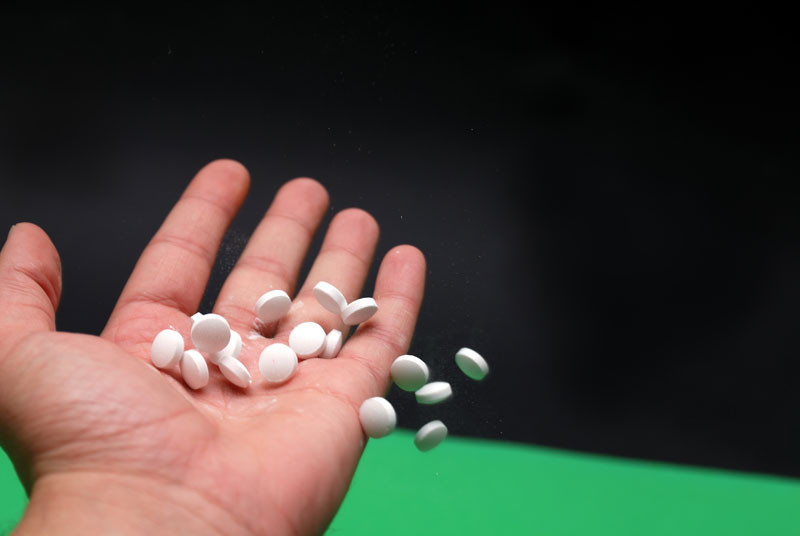The use of opioids such as hydrocodone, oxycodone and morphine have long been prescribed by doctors for the treatment of a variety of chronic pain conditions. Their use, per the National Institutes of Health (NIH), has long been considered an acceptable part of medical practice, although the use of opioids has become controversial. It has become a serious public health issue in which abuse of these prescription medicines has become rampant, with many patients becoming hooked on them, in large part because they are easily accessible and yet difficult for many to quit their use. Then there are the possible side effects. These include:
- Dizziness
- Nausea and vomiting
- Constipation
- Respiratory depression
- Delayed gastric emptying
- Muscle rigidity
- Hyperalgesia (increased sensitivity to pain)
- Myoclonus (sudden jerking/twitching of muscles)
- Immunologic and hormonal dysfunction
- Liver damage
- Drowsiness
- Mental confusion
- Tolerance
- Dependence
Opioid Prescriptions Too Easy to Obtain?
Despite all those disturbing numbers, opioids still rank among the most-prescribed drugs in the country, a reflection of their ability to block the brain's sensation of pain. So, how do opioid patients become addicted to or tolerant of these potent drugs? Per drugabuse.com, they act on opioid receptors that can be found in both the spinal cord and the brain, diminishing the intensity of how pain is perceived. Besides relieving pain – they were actually intended for the treatment of short-term, acute pain, not for addressing chronic pain conditions – opioids also can activate the area of the brain that can produce euphoria, or a high, further advancing its potential for misuse and addiction. Breaking the addiction can be difficult, or worse. That's because opioid addiction can alter brain circuitry, leading to compulsive seeking of more of the drug despite the negative consequences brought on by its use. It has been estimated that more than 100 million Americans suffer from chronic pain, and opioids have been the most common form of treatment for these conditions going on 20 years. Only in the last few years has doubt been cast on their safety and efficacy when used for medical treatment of chronic pain not related to cancer or quality-of-life care for patients with life-threatening illnesses.Opioid Alternatives
Clearly, health-care professionals and patients are advised to make every effort to find non-opioid treatments. In fact, finding effective Plan B's could become necessary as government agencies and state legislatures consider legal measures that would limit the prescribing of opioids and force the search for alternative treatments. Following are some of the alternatives to opioids to be considered, as needed:- Acetaminophen. Available over the counter, it's a generic version of Tylenol effective in relieving pain symptoms. Be forewarned, though: acute liver failure could occur if more than 4,000 milligrams are taken within a 24-hour period.
- Anticonvulsants. Effective in treating neuropathic pain conditions, per insight.athenahealth.com. One such drug is Neurontin, which reportedly is effective in high dosages. Anticonvulsants are believed to be non-habit-forming.
- Antidepressants. In particular, tricyclic antidepressants have been effective when used for neuropathic pain, although side effects can include weight gain and cardiovascular issues.
- Endomorphins. These can act much like opioids by binding to μ-opioid receptors and inducing analgesia, at that with few side effects, per clinicalpainadvisor.com.
- Spinal cord stimulation (SCS). Such technology has been deemed a worthy alternative to opioids and involves stimulation of dorsal root ganglion, a process showing usefulness in treating focal pain. High-frequency SCS provided pain relief without accompanying paresthesia (a prickling or burning sensation usually felt in the extremities).
- Psychotherapy. Among the effective forms are Cognitive Behavior Therapy and Acceptance and Commitment Therapy.
- Nerve zappers. These are smart electronic devices implanted in the body that, per an article by James Mitchell Crow published at nature.com, stimulates inhibitory neurons in the spine.
- Acupuncture. This ancient Chinese practice utilizes thin needles stuck into the skin at specific points of the body. It is believed that such use of these needles restores balanced flows of energy to the body, thus helping to alleviate pain.
- Steroid injections. Medical experts are divided on the effectiveness of steroids, which often are given to patients to reduce inflammation and pain associated with joints.
- Non-steroidal anti-inflammatory drugs (NSAIDs). These include aspirin and ibuprofen, which in addition to reducing pain can also cut down on inflammation and reduce fevers. Many are available over the counter, but if your goal is to treat an active pain condition, a consultation with your personal physician is first in order.

